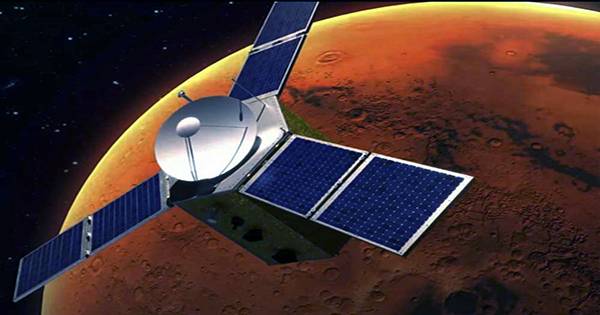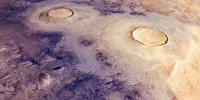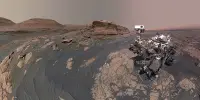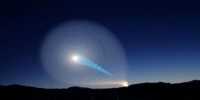The Emirates Mars Mission Red Planet, also known as Homit (Al-Amal), was busy studying the atmosphere. It has captured some of the strangest auroras on Mars, as well as the emission of hydrogen atoms around Mars. A few more images have now been published looking at the general atmosphere of the planet, its temperature, and even how oxygen moves on Mars. The release, shared on the Mission Twitter feed, shows the versatility of its devices.
The Emirates Exploration Imager, for example, captures the planet in ultraviolet light even in visible light. On the opposite side of the visible spectrum, the Emirates Mars Infrared Spectrometer (EMIRS) can track the heat emitted by the atmosphere, allowing it to adjust its temperature as soon as the temperature warms up in the morning. Although it is even higher than what is found on the surface of the earth.
EMIRS has a friend in the ultraviolet range. The Emirates Ultraviolet Spectrometer (EMUS) monitors the emission of atoms into UV from the Martian atmosphere. It was responsible for auroret detection and it recently showed a large patch of oxygen emissions from the night to the dioxide. Hopefully, the UAE became the fifth country to place a spacecraft in orbit around Mars and the second (after India) to do so in their first attempt.
The UAE mission, the first interstellar search conducted by an Arab country, reached the orbit of Mars on February 9, 2021. Now, some of the first images of the spacecraft’s instrument are available, including the Mars Infrared Spectrometer (EMIRS) with ASU-designed digital emirate planetary infrared images. AMIRS is a team backed by ASU’s School of Earth and Space Exploration, a team from the Department of Astronomy and Planetary Sciences at the University of Northern Arizona, and Boulder’s Laboratory team for the Mohammed Bin Rashid Space Center, University of Colorado, Atmosphere and Space Physics.
“Our work with ASU and NAU teams at EMIRS brings together the world’s most respected experts in planetary atmospheric science with young learners who have benefited greatly from the development of the instrument and its scientific goals and consequent data sets,” said the director of the Emirates Mars Mission project. Sharaf said.
















